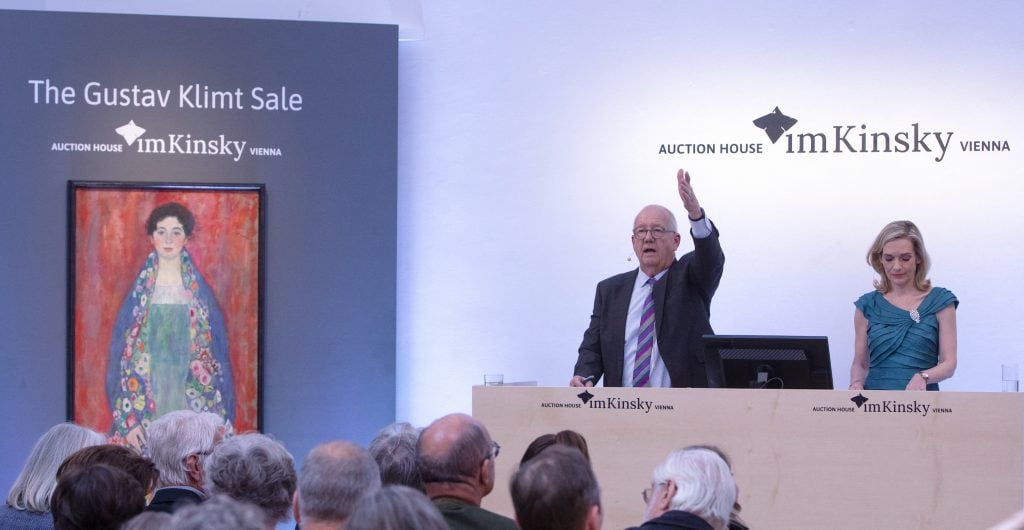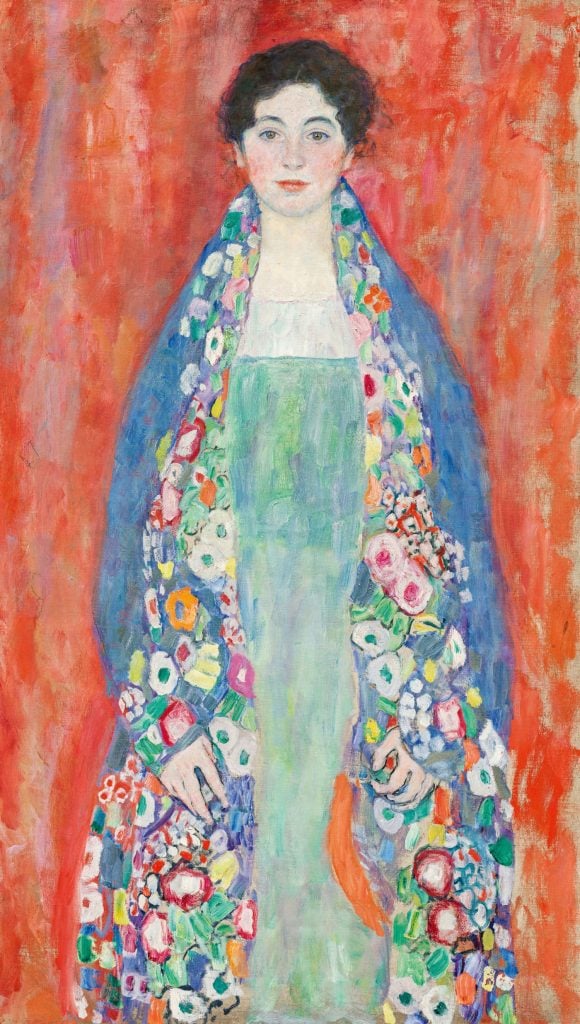Market
A Gustav Klimt Portrait, Presumed Lost for Decades, Sets a New Record at $32 Million
The painting's provenance has sparked considerable debate among specialists.

The painting's provenance has sparked considerable debate among specialists.

Brian Boucher

A portrait by Gustav Klimt that was missing for a century has sold at a Vienna auction house for $32 million. Portrait of Fräulein Lieser (1917), which bore an estimate of €30 million–€50 million ($32.5 million–$55 million) went to a buyer from Hong Kong, bidding via Hong Kong advisory firm Patti Wong & Associates.
Im Kinsky’s head of modern art Claudia Mörth-Gasser said the house was “overjoyed… but not really surprised.” She had previously described the work as “incredibly well preserved, in almost unblemished original condition.” Before this sale, the small auction house’s highest-ever price was $6.1 million, for an Egon Schiele artwork; the price for the Klimt, one of the founders of the Vienna Secessionist movement, is the highest ever achieved by any Austrian auction house.
Experts have disagreed on the identity of the sitter, but she is known to have come from the Lieser family of wealthy Jewish industrialists. Found partially finished in the artist’s studio when he died in 1918, the painting was given to the Lieser family. She may have been one of two daughters of Henriette Lieser: either Helene, who would go on to become an economist, or Annie, who achieved renown as a dancer. Henriette Lieser was a major patron of the avant-garde in Vienna. She was deported by the Nazis and died at Auschwitz in 1943, says the house.

Gustav Klimt, Portrait of Fräulein Lieser (1917) (detail). Photo: © Auktionshaus im Kinsky GmbH, Vienna.
There are gaps in the painting’s history. When a photograph of it, now in the collection of the Austrian National Library, was taken in 1925, it was still in the Lieser family’s hands. Its movements between then and the 1960s, when the seller’s family came into the possession of the painting, are unknown. The gap raises questions about whether the work should be treated as having been improperly acquired during the Nazi regime.
Not all experts are convinced that the sale is within legal and ethical bounds. “Every form of taking away during the Nazi time has to be treated as unlawful,” art law expert Ernst Ploil, who researched the painting’s history, told the New York Times, which also quotes Klimt experts Tobias Natter and Alfred Weidinger saying that “contrary to all international standards, the auction house has failed to involve the two leading Klimt experts, both of whom have published a catalog raisonné.”
The Lieser family has not made any claims to ownership of the canvas. The portrait was offered on behalf of both the consignor and the legal descendants of the Lieser family, in accordance with the Washington Principles on Nazi-Confiscated Art, established in 1998 to support the identification and return of looted art.
Klimt’s Art Nouveau style is closely identified with the fin-de-siècle Austrian avant-garde, and some of his trademark works are portraits of female subjects. His current auction record of $108.4 million was set in June 2023 at Sotheby’s London for the painting Lady with a Fan (1917–18). In 2006, his Portrait of Adele Bloch-Bauer II (1912) sold for $88 million at Christie’s New York, reportedly to Oprah Winfrey.